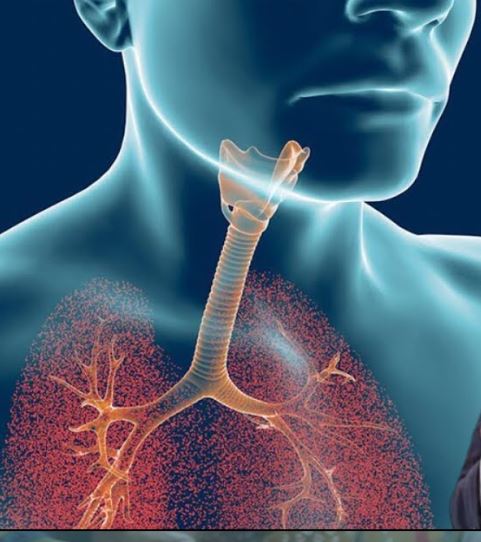Contents
Phlegm is a mixture of mucus and saliva. It is usually yellow, white or green in color. When bacteria and other microorganisms enter the respiratory tract, they settle on the lungs. Cilia covering the surface of the organ capture them and “push” them together with the mucus outside. Phlegm not only facilitates the removal of pathogens from the body, but also moisturizes the respiratory tract and prevents it from drying out. The problem occurs when there is too much secretion. Its overproduction occurs when the body is struggling with infection and “invasion” of pathogens.
Home remedies for phlegm in the throat
Phlegm in the throat can cause many persistent symptoms that make everyday functioning difficult for the patient. It is accompanied by hoarseness, a scratching or tickling feeling in the throat, persistent cough, difficulty swallowing, and sometimes vomiting. There are various home remedies that can help get rid of excess discharge.
What to do to remove phlegm from the throat? First of all, you should ensure that you drink adequate amounts of fluids . You need to drink a lot and regularly moisturize your respiratory tract. This is very important because hydrating the body dilutes the remaining secretions and makes it easier to expectorate. However, when the fluid supply is too low, phlegm thickens and the body begins to produce even more of it.
Herbal gargles can also help get rid of phlegm from the throat. Sage extract has disinfecting properties. It has an astringent effect on the throat mucosa. It soothes inflammation and at the same time reduces unpleasant symptoms such as pain or hoarseness. To prepare it, simply pour two tablespoons of dried sage leaves with a glass of hot water and infuse, covered, for fifteen minutes. Then, strain the infusion and, after it has cooled, gargle with it two or three times a day.
Drinking milk with honey and garlic also makes it easier to expectorate phlegm . This “mixture” inhibits the growth of bacteria. Milk with honey and garlic works like a natural antibiotic and speeds up the healing process. It is worth reaching for them at the first symptoms of infection, before the disease has time to develop. This is when it is most effective. Other home remedies for mucus in the throat include:
- Herbal inhalations – just prepare an infusion of sage, chamomile, thyme or rosemary and inhale the steam rising from the hot liquid. You can also add a few drops of essential oils, for example eucalyptus, to hot water.
- Humidifying rooms in your house or apartment – dry air promotes excessive production of phlegm. Therefore, it is worth using a humidifier or placing wet towels on the radiators.
- Drinking homemade syrups – onion syrup, for example, will be helpful.
When are home remedies to get rid of phlegm not enough?
Please remember that home remedies for phlegm will help with mild infections in the upper respiratory tract. If the disease has progressed and the bronchial tubes become infected, you should immediately see your primary care physician. A visit to a specialist is also recommended when phlegm in the throat persists for more than a few days. Sometimes excess phlegm may be a symptom of more serious diseases, including cancer. An important alarm signal is the appearance of blood in the secretion.
Use of Cinnamon in Phlegm
Cinnamon is believed to have properties that may help alleviate symptoms of phlegm due to its potential anti-inflammatory and antimicrobial effects. Here are some ways you can use cinnamon to potentially help with phlegm:
- Cinnamon Tea:
- Ingredients:
- 1 cinnamon stick or 1/2 teaspoon of ground cinnamon
- 1 cup of water
- Directions:
- Boil the water and add the cinnamon stick or ground cinnamon.
- Let it steep for about 10-15 minutes.
- Remove the cinnamon stick or strain out the ground cinnamon.
- Drink the tea while it’s warm.
- Ingredients:
- Cinnamon and Honey Mixture:
- Ingredients:
- 1/2 teaspoon of ground cinnamon
- 1 tablespoon of honey
- Directions:
- Mix the cinnamon and honey together in a small bowl.
- Consume the mixture once or twice a day.
- Ingredients:
- Cinnamon and Ginger Tea:
- Ingredients:
- 1 cinnamon stick or 1/2 teaspoon of ground cinnamon
- 1 teaspoon of freshly grated ginger
- 1 cup of water
- Directions:
- Boil the water and add the cinnamon stick or ground cinnamon along with the grated ginger.
- Let it steep for about 10-15 minutes.
- Strain out the cinnamon stick and ginger.
- Drink the tea while it’s warm.
- Ingredients:
- Cinnamon Steam Inhalation:
- Ingredients:
- 1 cinnamon stick or 1/2 teaspoon of ground cinnamon
- A bowl of hot water
- Directions:
- Add the cinnamon stick or ground cinnamon to a bowl of hot water.
- Lean over the bowl and inhale the steam for about 10 minutes.
- Ingredients:
- Cinnamon in Food:
- You can also incorporate cinnamon into your meals and beverages. Sprinkle ground cinnamon on oatmeal, yogurt, or add it to smoothies and baked goods.
Please note that while cinnamon may have potential benefits, it’s important to consult with a healthcare professional if you have persistent or severe phlegm issues, as they may be indicative of an underlying health condition that requires medical attention. Also, if you have allergies or sensitivities to cinnamon, be cautious when using it in any form.

